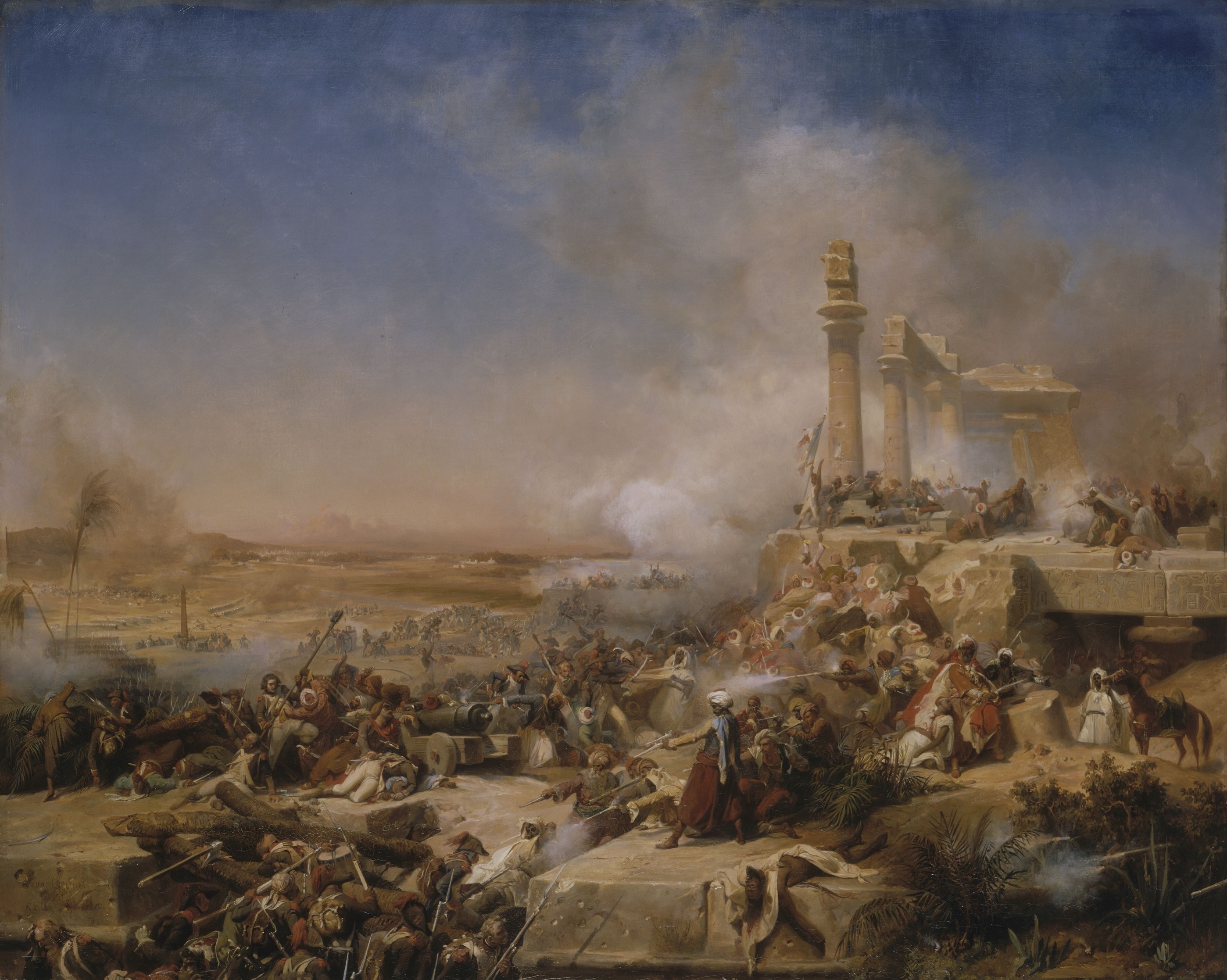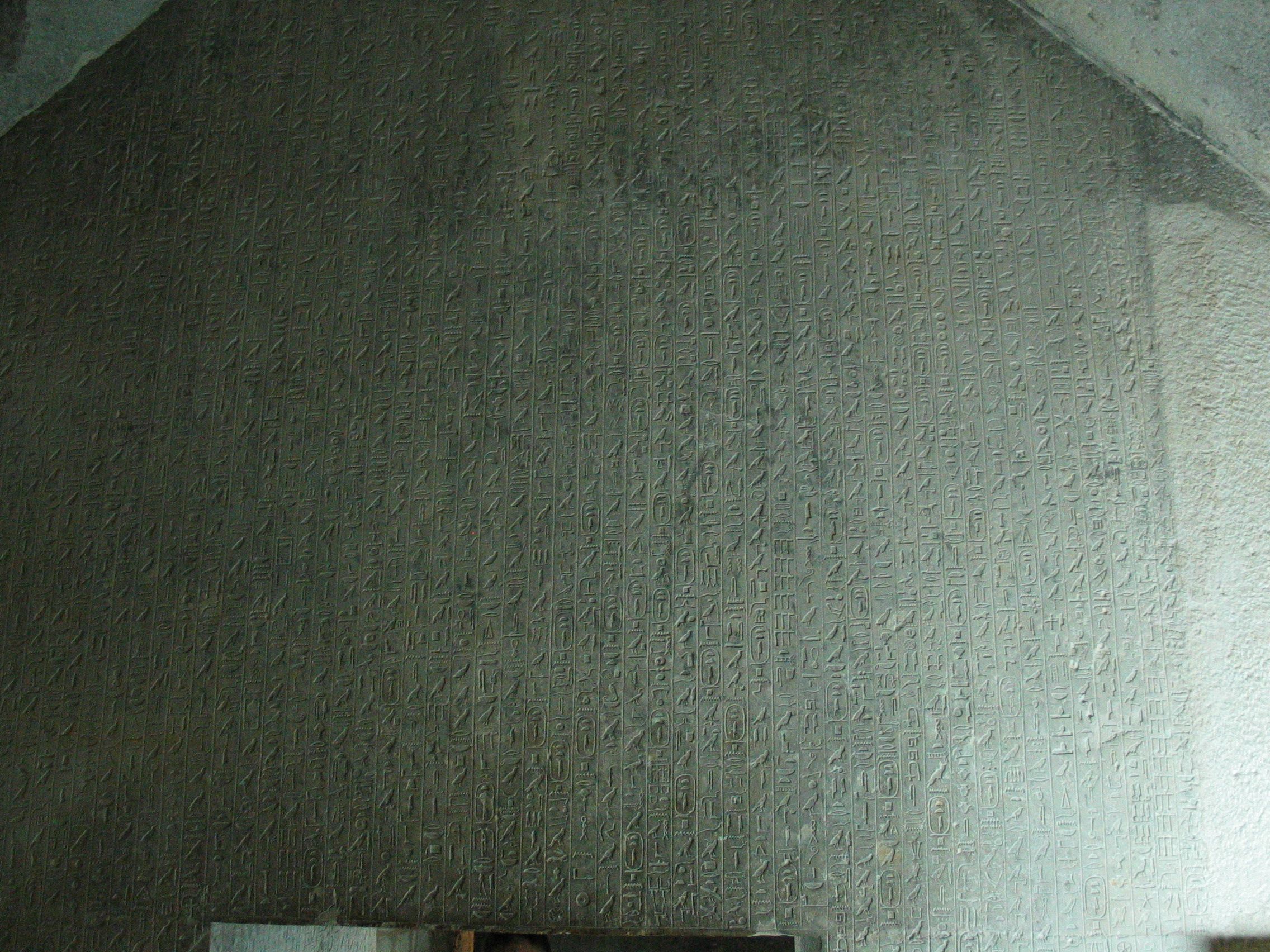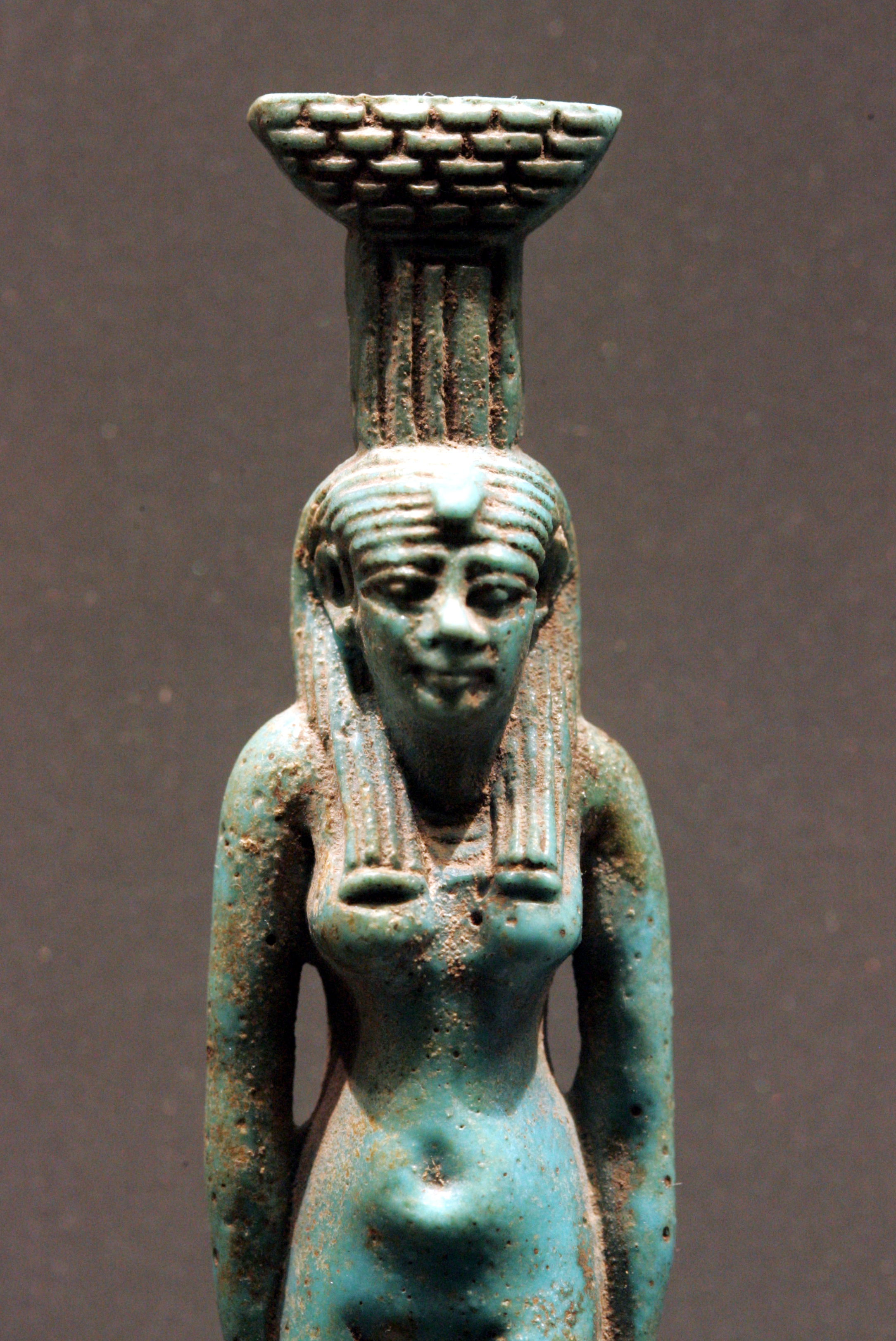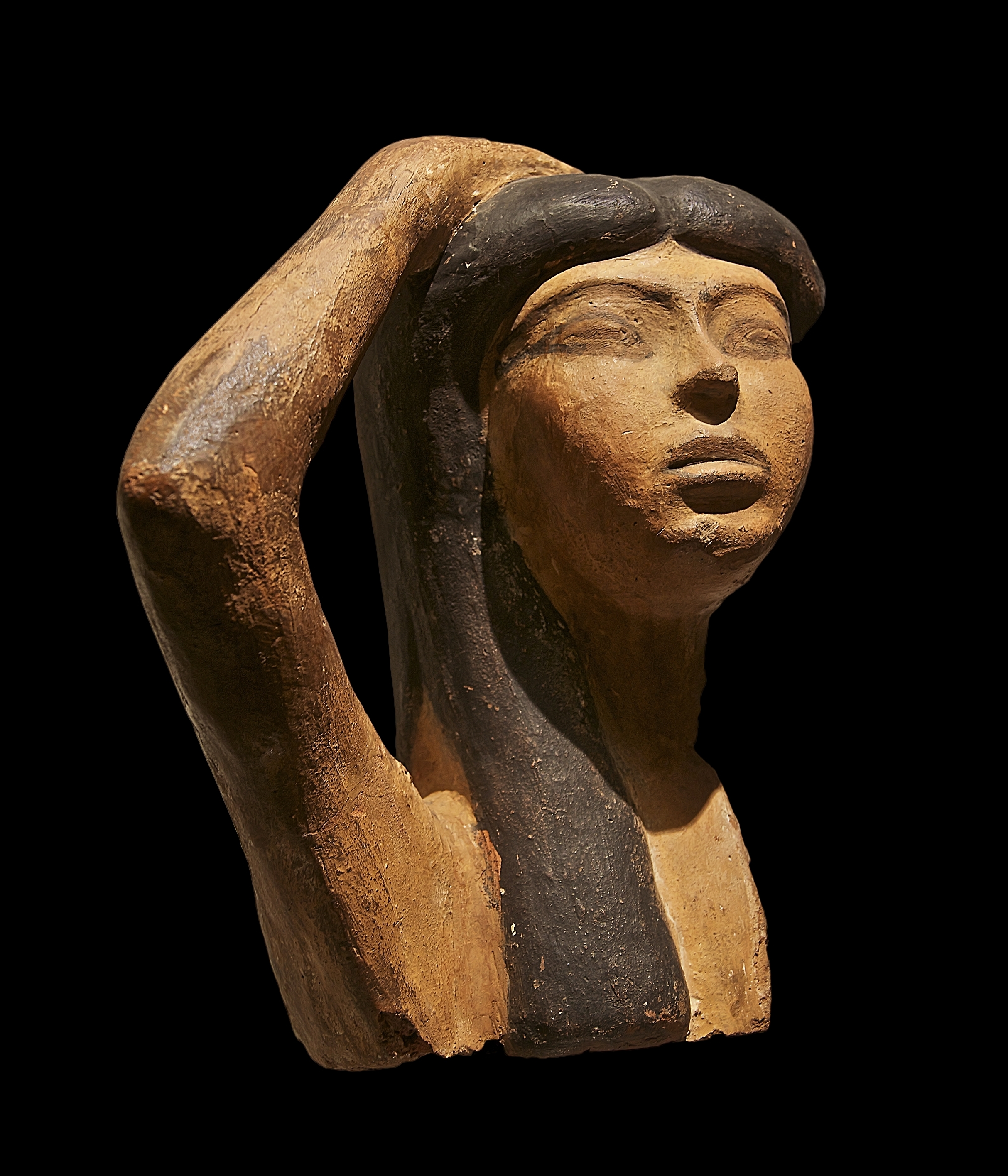|
Atum-re
Atum (, Egyptian language, Egyptian: ''jtm(w)'' or ''tm(w)'', ''reconstructed'' ; Coptic language, Coptic ''Atoum''), sometimes rendered as Atem, Temu, or Tem, is the primordial God in Egyptian mythology from whom all else arose. He created himself and is the father of Shu (Egyptian deity), Shu and Tefnut, the divine couple, who are the ancestors of the other Egyptian deities. Atum is also closely associated with the evening sun. As a primordial god and as the evening sun, Atum has chthonic and duat, underworld connections. Atum was relevant to the ancient Egyptians throughout most of Egypt's history. He is believed to have been present in ideology as early as Prehistoric Egypt, predynastic times, becoming even more prevalent during the Old Kingdom of Egypt, Old Kingdom and continuing to be worshiped through the Middle Kingdom of Egypt, Middle and New Kingdom of Egypt, New Kingdom, though he becomes overshadowed by Ra around this time. Name Atum's name is thought to be derived f ... [...More Info...] [...Related Items...] OR: [Wikipedia] [Google] [Baidu] |
Heliopolis (Ancient Egypt)
Heliopolis (Jwnw, Iunu; , 'the Pillars'; , ; ) was a major city of ancient Egypt. It was the capital of the 13th or Heliopolite Nome of Lower Egypt and a major religious centre. Its site is within the boundaries of Ain Shams and El Matareya, districts (''kism'') in northeastern Cairo. Heliopolis was one of the oldest cities of ancient Egypt, occupied since prehistoric Egypt.. It greatly expanded under the Old and Middle Kingdoms but is today mostly destroyed, its temples and other buildings having been scavenged for the construction of medieval Cairo. Most information about the ancient city comes from surviving records. A major surviving remnant of Heliopolis is the obelisk of the Temple of Ra- Atum erected by Senusret I of the Twelfth Dynasty. It remains in its original position (now in el-Masalla, El Matareya, Cairo). The high red granite obelisk weighs 120 tons (240,000 lbs) and is believed to be the oldest surviving obelisk in the world. Other obelisks, o ... [...More Info...] [...Related Items...] OR: [Wikipedia] [Google] [Baidu] |
Tatenen
Tatenen (also Ta-tenen, Tatjenen, Tathenen, Tanen, Tenen, Tanenu, and Tanuu) was the deity of the primordial mound in ancient Egyptian religion. His name means "risen land"Tatenen Retrieved 2009-10-21. or "exalted earth", Retrieved 2008-10-21. as well as referring to the of the . As a primeval deity, [...More Info...] [...Related Items...] OR: [Wikipedia] [Google] [Baidu] |
Ancient Egyptian Creation Myths
Ancient Egyptian creation myths are the ancient Egyptian accounts of the creation of the world. The Pyramid Texts, tomb wall decorations, and writings, dating back to the Old Kingdom (c. 2700–2200 BC) have provided the majority of information regarding ancient Egyptian creation myths. These myths also form the earliest recorded religious compilations in the world. The ancient Egyptians had many creator gods and associated legends. Thus, the world or more specifically Egypt was created in diverse ways according to different parts of ancient Egypt. Some versions of the myth indicate spitting, others masturbation, as the act of creation. The earliest god, Ra and/or Atum (both being creator/ sun gods), emerged from a chaotic state of the world and gave rise to Shu ( air) and Tefnut (moisture), from whose union came Geb (earth) and Nut (sky), who in turn created Osiris, Isis, Set, and Nephthys. An extension to this basic framework was the Osiris myth involving Osiris, hi ... [...More Info...] [...Related Items...] OR: [Wikipedia] [Google] [Baidu] |
Shabaka Stone
The Shabaka Stone, sometimes Shabaqo, is a relic incised with an ancient Egyptian religious text, which dates from the Twenty-fifth Dynasty of Egypt. In later years, the stone was likely used as a millstone, which damaged the hieroglyphs. This damage is accompanied by other intentional defacements, leaving the hieroglyphic inscription in poor condition. Provenance Historical origins Originally erected as a lasting monument at the Great Temple of Ptah in Memphis in the late eighth century BCE, the stone was at some point removed (for unknown reasons) to Alexandria. From there, it was transported by a navy vessel from Alexandria to England. It was brought back as ballast along with a capital of an Egyptian column, fragments of a Greco-Roman black basalt capital, two fragments of quartzite lintel of Senusret III, and a black granite kneeling statue of Ramesses II. In 1805, the stone was donated to the British Museum by George Spencer, 2nd Earl Spencer (1758–1 ... [...More Info...] [...Related Items...] OR: [Wikipedia] [Google] [Baidu] |
World Egg
''Cosmic Egg'' is the second studio album by Australian rock band Wolfmother, released on 23 October 2009. It is the first album by the second lineup of the band, featuring vocalist, songwriter and lead guitarist Andrew Stockdale, bassist and keyboardist Ian Peres, rhythm guitarist Aidan Nemeth and drummer Dave Atkins, formed in 2009 after original members Chris Ross and Myles Heskett left in August 2008. Upon its release, ''Cosmic Egg'' peaked at number three on the Australian ARIA Albums Chart, the same position as the band's first album. The album was the only studio release by the band to feature Atkins, who left the band in April 2010 during the ''Cosmic Egg'' promotional tour cycle. The album was recorded between April and May 2009 at Sound City Studios and Sunset Sound Studios in Los Angeles, California. The title of the album comes from a position in yoga described by frontman Stockdale as "like the fetal pose". The album's release was promoted throughout 2009 and ... [...More Info...] [...Related Items...] OR: [Wikipedia] [Google] [Baidu] |
Heliopolis (ancient Egypt)
Heliopolis (Jwnw, Iunu; , 'the Pillars'; , ; ) was a major city of ancient Egypt. It was the capital of the 13th or Heliopolite Nome of Lower Egypt and a major religious centre. Its site is within the boundaries of Ain Shams and El Matareya, districts (''kism'') in northeastern Cairo. Heliopolis was one of the oldest cities of ancient Egypt, occupied since prehistoric Egypt.. It greatly expanded under the Old and Middle Kingdoms but is today mostly destroyed, its temples and other buildings having been scavenged for the construction of medieval Cairo. Most information about the ancient city comes from surviving records. A major surviving remnant of Heliopolis is the obelisk of the Temple of Ra- Atum erected by Senusret I of the Twelfth Dynasty. It remains in its original position (now in el-Masalla, El Matareya, Cairo). The high red granite obelisk weighs 120 tons (240,000 lbs) and is believed to be the oldest surviving obelisk in the world. Other obelisks, o ... [...More Info...] [...Related Items...] OR: [Wikipedia] [Google] [Baidu] |
Pyramid Texts
The Pyramid Texts are the oldest ancient Egyptian funerary texts, dating to the late Old Kingdom. They are the earliest known corpus of ancient Egyptian religious texts. Written in Old Egyptian, the pyramid texts were carved onto the subterranean walls and sarcophagi of pyramids at Saqqara from the end of the Fifth Dynasty, and throughout the Sixth Dynasty of the Old Kingdom, and into the Eighth Dynasty of the First Intermediate Period. The oldest of the texts have been dated to –2300 BCE. Unlike the later Coffin Texts and '' Book of the Dead'', the Pyramid Texts were reserved only for the pharaoh and were not illustrated. The use and occurrence of Pyramid Texts changed between the Old, Middle, and New Kingdoms of Ancient Egypt. During the Old Kingdom (2686 BCE – 2181 BCE), Pyramid Texts could be found in the pyramids of kings as well as three queens, named Wedjebten, Neith, and Iput. During the Middle Kingdom (2055 BCE – 1650 BCE), Pyramid Texts were not writte ... [...More Info...] [...Related Items...] OR: [Wikipedia] [Google] [Baidu] |
Horus
Horus (), also known as Heru, Har, Her, or Hor () in Egyptian language, Ancient Egyptian, is one of the most significant ancient Egyptian deities who served many functions, most notably as the god of kingship, healing, protection, the sun, and the sky. He was worshipped from at least the late prehistoric Egypt until the Ptolemaic Kingdom and Egypt (Roman province), Roman Egypt. Different forms of Horus are recorded in history, and these are treated as distinct gods by Egyptology, Egyptologists."The Oxford Guide: Essential Guide to Egyptian Mythology", Edited by Donald B. Redford, Horus: by Edmund S. Meltzer, pp. 164–168, Berkley, 2003, . These various forms may be different manifestations of the same multi-layered deity in which certain attributes or Syncretism, syncretic relationships are emphasized, not necessarily in opposition but complementary to one another, consistent with how the Ancient Egyptians viewed the multiple facets of reality. He was most often depicted as ... [...More Info...] [...Related Items...] OR: [Wikipedia] [Google] [Baidu] |
Nephthys
Nephthys or Nebet-Het in ancient Egyptian () was a goddess in ancient Egyptian religion. A member of the Great Ennead of Heliopolis in Egyptian mythology, she was a daughter of Nut and Geb. Nephthys was typically paired with her sister Isis in funerary rites because of their role as protectors of the mummy, with her brother Osiris, and as the sister-wife of Set. She was associated with mourning, the night/darkness, service (specifically temples), childbirth, the dead, protection, magic, health, embalming, and beer. Etymology Nephthys is the Greek form of an epithet (transliterated as ''Nebet-hut'', ''Nebet-het'', ''Nebt-het'', from Egyptian ''nbt-ḥwt''). The origin of the goddess Nephthys is unclear but the literal translation of her name is usually given as ''Lady of the House'' or ''Lady of the Temple.'' This title, which may be more of an epithet describing her function than a given name, probably indicates the association of Nephthys with one particular temple or s ... [...More Info...] [...Related Items...] OR: [Wikipedia] [Google] [Baidu] |
Set (deity)
Set (; Egyptian language#Egyptological pronunciation, Egyptological: ''Sutekh - swtẖ ~ stẖ'' or: Seth ) is a deity, god of deserts, storms, disorder, violence, and foreigners in ancient Egyptian religion. In Ancient Greek, the god's name is given as (). Set had a positive role where he accompanied Ra on his solar barque, barque to repel Apep (Apophis), the serpent of Chaos. Set had a vital role as a reconciled combatant. He was lord of the Red Land (desert), where he was the balance to Horus' role as lord of the Black Land (fertile land). In the Osiris myth, the most important Egyptian mythology, Egyptian myth, Set is portrayed as the usurper who murdered and mutilated his own brother, Osiris. Osiris's sister-wife, Isis, reassembled his corpse and resurrection, resurrected her dead brother-husband with the help of the goddess Nephthys. The resurrection lasted long enough to conceive his son and heir, Horus. Horus sought revenge upon Set, and many of the ancient Egyptian myt ... [...More Info...] [...Related Items...] OR: [Wikipedia] [Google] [Baidu] |
Isis
Isis was a major goddess in ancient Egyptian religion whose worship spread throughout the Greco-Roman world. Isis was first mentioned in the Old Kingdom () as one of the main characters of the Osiris myth, in which she resurrects her slain brother and husband, the divine king Osiris, and produces and protects his heir, Horus. She was believed to help the dead enter the afterlife as she had helped Osiris, and she was considered the divine mother of the pharaoh, who was likened to Horus. Her maternal aid was invoked in healing spells to benefit ordinary people. Originally, she played a limited role in royal rituals and temple rites, although she was more prominent in funerary practices and magical texts. She was usually portrayed in art as a human woman wearing a throne-like hieroglyph on her head. During the New Kingdom (), as she took on traits that originally belonged to Hathor, the preeminent goddess of earlier times, Isis was portrayed wearing Hathor's headdress: a ... [...More Info...] [...Related Items...] OR: [Wikipedia] [Google] [Baidu] |










